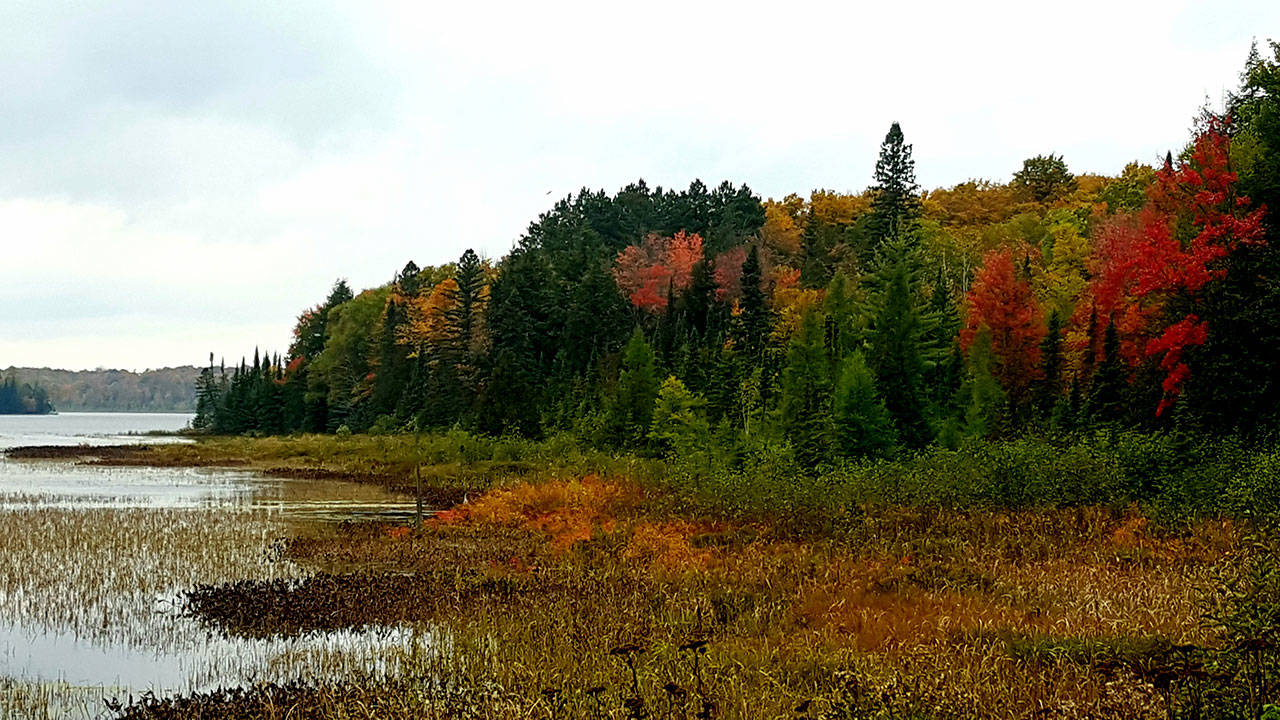WHAT MAKES SOME leaves red, others orange, others from greens to yellow or gold, some purple or ember?
Why are there good years, bad years, sometimes early seasons, while other years the trees turn colors late?
It has more to do with the calendar earlier in the year than the temperatures dropping or even the effect frost has, so let’s find out why.
By now, anyone who has read this column for more than a year knows I am a huge proponent of fall foliage color and how everyone must plant at least one new (and different color and/or response time) tree, bush, shrub, vine or perennial precisely for its outstanding autumn interest each fall.
That annual ritual will greatly enhance your yard’s aesthetic quality.
Today is the perfect time to remake this appeal, for not only are we just about to begin the ideal time to plant such items, but nurseries are full of blazing fall colors.
This is the prime time to drive around the North Olympic Peninsula, admiring the fabulous hues that are autumn’s colored leaves.
Vine maple explodes in burning embers, the burnish bush ablaze in red; sweetgums, maples, oaks, sourwood, sumac, witch hazel, viburnum, birches, grasses even peonies are but a few of the specimens decked out so brightly, displaying their harvest moon colors.
And since we are in the week of prime color, as you drive around to nurseries and plan a breathtaking scenic-colored tree drive, perhaps you might ponder what actually makes the leaves go out in such a blaze of glory?
Science, my friends, and I love science, so here we go, the science of fall leaf color:
To begin, many people believe frost or the significantly cooler days of autumn cause the leaves to turn, but this is now understood to be only one of the many environmental factors that causes the process.
It begins with the actual cycle of deciduous trees, whose new growth and leaves occur in a very short period of time from buds last year that overwintered.
Most deciduous trees have completed their new growth and set their growth buds for early July here on the Olympic Peninsula.
These new buds will not and cannot open until they experience the cold temperatures and long nights of winter.
When leaves are fully expanded, the process of storing food through a mechanism of chlorophyll and photosynthesis begins, in order to supply the nutrients for next year’s breakout and growth.
Chlorophyll, however, breaks down in sunlight and must be constantly replaced within the leaf.
As the Earth tilts away from the sun and temperatures and light intensity lower in late summer, a threshold value is reached, and the scientific magic of fall color begins a cascade effect that ends in a blaze of various colors.
First, this condition of cooler, shorter days causes the leaves’ cells at the junction of the leaf and stem to rapidly divide, but they do not significantly enlarge, which causes a corky layer to form at the connection of leaf to tree.
This blockage begins to increasingly choke off the flow of water and nutrients to the leaf.
The leaf in turn begins to slow, then discontinues chlorophyll production, and here we begin.
The intense green nature of chlorophyll masks other pigments present in the leaves throughout the growing season.
As the chlorophyll production first lessens, then ceases, these coverup pigments emerge as the primary hues of the leaf, and fall color is revealed.
Then, as frost, wind and rain descend, the fully blocked-off, strangled leaf floats into your gutter.
The rainbow of color is achieved because of the varying pigments in each species of tree.
Yellow color, for example, is from pigments known as xanthophylls, while orange pigments are carotenoids.
Red colors, which tend to be very intense, and purple hues are anthocyanins and are manufactured from the sugars left in the leaf as it is choked off by the corky layer.
Some tree species take longer into the season to defoliate, and many turn yellow, then stony brown, because like chlorophyll, pigments break down as well, leaving only tannins, which are brown.
Weather influences color, whereby cool night temperatures combined with sunlight (this year) promotes more anthocyanins (red and purple).
Freezing temperatures destroy pigment early, and hard frost especially ends fall color.
Strong winds rip the weakened and blocked-off leaf from the stem, while abundant sunlight and cool temperatures cause chlorophyll to be destroyed more rapidly and evenly.
Severe weather, especially drought, triggers an earlier response.
While the soil is still not saturated with our normal October rains, go out and enjoy the autumn sensation, packing home a small tree or two to make your neighbors jealous of your yard.
________
Andrew May is an ornamental horticulturist who dreams of having Clallam and Jefferson counties nationally recognized as “Flower Peninsula USA.” Send him questions c/o Peninsula Daily News, P.O. Box 1330, Port Angeles, WA 98362, or email news@peninsuladailynews.com (subject line: Andrew May).

